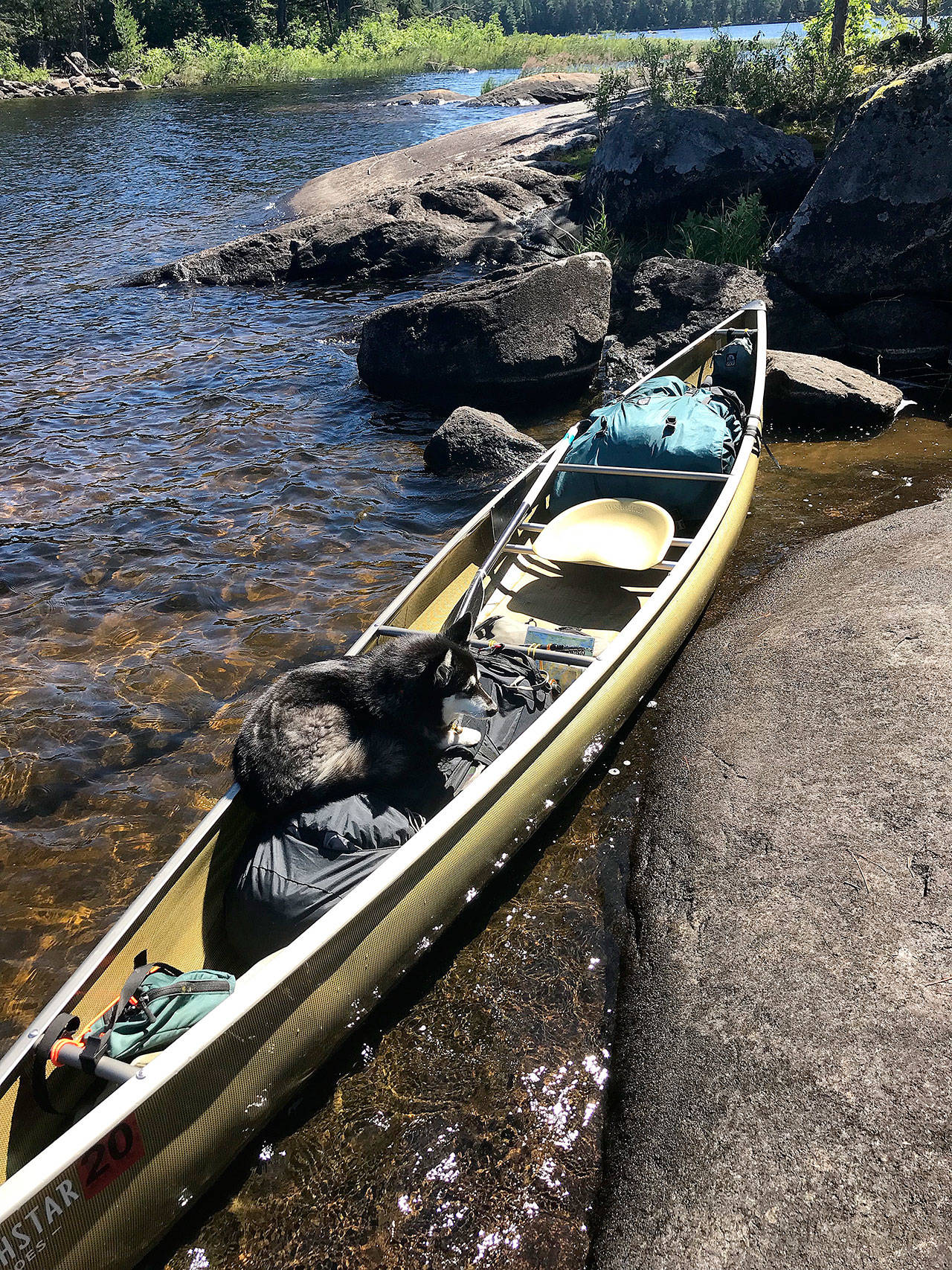Jim Christensen’s summer vacation means getting away to the remote woodlands of northern Minnesota, making his way into Ontario’s Quetico Park and back with only a canoe, a canine companion and minimal provisions.
Christensen, who lives in Langley, is a self-described wilderness expert and makes the unusual trek after the end of the academic year at South Whidbey High School, where he teaches physical fitness.
The nearly two-week adventure begins about four hours north of Minneapolis, in the Boundary Waters wilderness, with a rented canoe and a remote-area border crossing permit.
Wind and muscle power are the only means of propulsion permitted in the adjoining wild country parks.
“During this trip I traveled by canoe and portaged through 20-plus lakes, rivers and streams,” says Christensen. “For some, this is the experience of a lifetime and I’m fortunate to go almost every year.
“My son, Wes, and I have been canoeing that area for over 15 years.”
Quetico Provincial Park, at over a million acres, is arguably the quintessential wilderness area, with its rugged natural beauty, solitude, and excellent opportunities to canoe, fish and camp. Only about 25,000 people visit the park annually.
“I have returned yearly to the Quetico, because it is a huge, true wilderness, and only mildly used,” says Christensen. “It is an area with a rich history and stunning scenery, wildlife, and peace and quiet. It tests me physically and mentally. Solo trips are unique for the solitude, reflection and centering. That’s very important to me.”
Christensen’s dog, a miniature husky named Izzy, has made the trip four times.
“She is 4-and-a-half and absolutely loves the experience,” he says. “I walk each portage twice (carrying gear from lake to lake), but she runs the portages several times and explores all of the sights. The area is rich with moose, bear, deer, wolf, and other wildlife. Fishing is amazing, with walleye, pike, lake trout, and bass. Izzy loves all the associated smells!”
Christensen said there are perils associated with a trip in such a remote area.
“The biggest problem is slipping and falling. Solo wilderness camping is mildly dangerous for an experienced outdoorsman, but not as dangerous as driving to the store,” he said.
“I see very few people in the Quetico, so an injury or serious illness could be a little difficult. I carry a satellite phone just in case I need emergency help.”
Christensen said he and Izzy encountered a moose and two bears, but there were no problems.
He says he paddled quietly past the moose, an animal known for unpredictability.
Christensen says he does a lot of reading and writing in his journal during his trips, and he takes many photographs. He has minimal provisions, eating almost the same simple food every day. Based on experience, he has two supply bundles, even though most people carry only one pack.
In Quetico, visitors say there are many excellent camping areas.
Sometimes congestion occurs in Boundary Waters, where camping is only permitted in established locations. Some travelers also appreciate the somewhat larger lakes in Quetico.
Christensen says he has been camping his whole life, and considers himself and his son as experts in wilderness experiences.
When he is not camping or teaching, Christensen, also a licensed physical therapist, operates the Family Therapy Physical Fitness Center at Ken’s Korner in Clinton.



